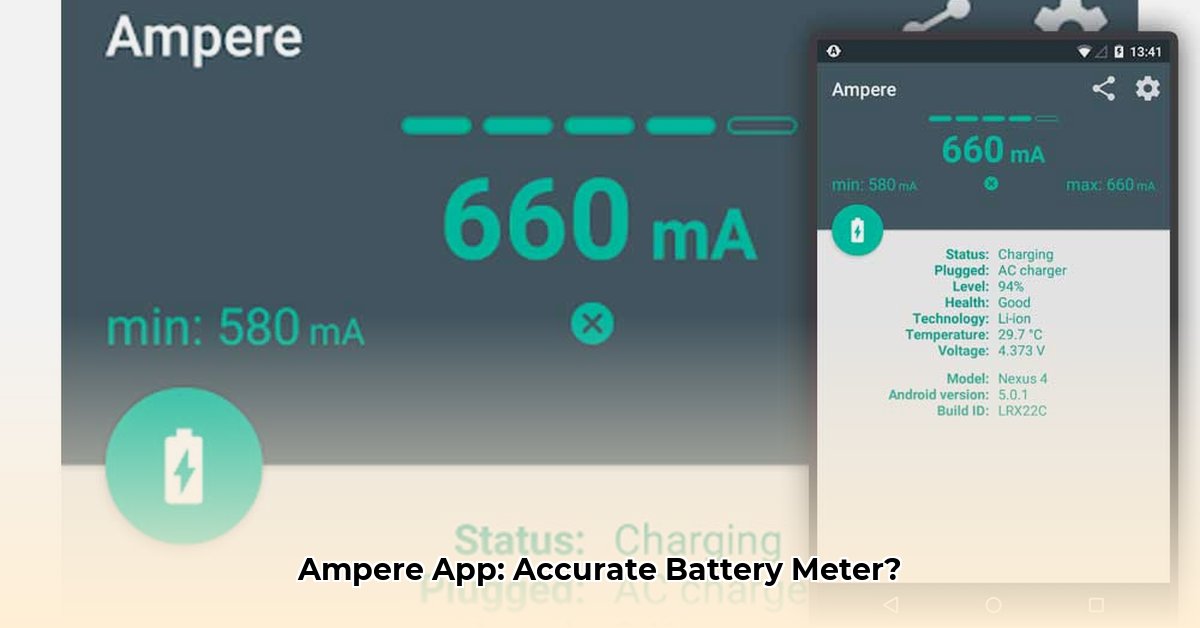
This article analyzes the Ampere app for Android, exploring its functionality, accuracy, limitations, and implications within the broader context of Android battery measurement technology. We'll examine its strengths and weaknesses, compare it to alternative solutions, and offer practical advice for users.
Understanding Ampere's Functionality and Limitations
Ampere aims to provide real-time measurements of your Android device's battery charging and discharge rates, displayed in milliamperes (mA). While seemingly straightforward, the app's accuracy is not consistently reliable across all devices. It relies heavily on data provided by the Android operating system, and inconsistencies within Android's battery reporting mechanisms significantly impact Ampere's performance. This is analogous to using a kitchen scale for precision laboratory measurements—it offers a general indication but lacks the precision for highly accurate scientific findings.
Compatibility Concerns: A Significant Hurdle
A major limitation is Ampere's compatibility. Not all Android devices are fully supported. Many older models, and surprisingly, a considerable number of Samsung devices, experience issues. This significantly reduces the app's usefulness, as inaccurate or non-functional readings are rendered on incompatible devices. Thorough compatibility checks before download are crucial to avoid frustration.
Accuracy Analysis: Averaging Techniques and Their Impact
Ampere employs averaging techniques to smooth out the raw data, aiming to provide a stable reading. However, this inherent smoothing, while improving the user experience, inevitably reduces precision. The app's readings should be viewed as estimates, not precise, calibrated measurements. Factors such as charger quality, cable condition, and concurrently running applications all contribute to the variability of the readings. Considering this, it's more prudent to view Ampere's data as comparative rather than as absolute truth.
Data Interpretation: A User's Perspective
Observing a low reading in Ampere doesn't pinpoint the exact cause. It offers data but requires analytical interpretation by the user. Is it charger deficiency, an internal phone issue, or a combination of factors? Ampere doesn't provide definitive answers but facilitates insightful comparisons across different charging scenarios and conditions.
Alternative Measurement Method: The "Old Measurement Method"
For devices lacking support for Ampere's primary measurement method, a secondary method, often referred to as the "Old Measurement Method," is employed. However, this method is generally less reliable, analogous to using a backup power generator—useful in emergencies, but not as efficient or precise as the primary method.
Alternative Android Battery Monitoring Apps
The limitations of Ampere highlight the need to explore alternative Android battery monitoring apps. Two prominent examples are GSam Battery Monitor and AccuBattery. GSam provides extensive details regarding battery usage, pinpointing power-consuming apps, though its interface requires more learning. AccuBattery, on the other hand, focuses on long-term battery health analysis, learning from charging patterns to offer more accurate predictions over time. While both offer a level of detail that Ampere lacks, their accuracy remains contingent upon the Android device's battery reporting system.
Improving Ampere's Accuracy: Pragmatic Tips
While perfect accuracy remains elusive due to Android's inherent inconsistencies, users can take the following steps to optimize Ampere's readings:
- Software Updates: Update Ampere and your Android OS to the latest versions. Updates often include critical bug fixes and accuracy improvements.
- Battery Calibration (with caution): While some apps offer battery calibration features, their effectiveness is debatable and outcomes may vary significantly.
- Cross-referencing Data: Corroborate Ampere's readings with data from other apps like GSam or AccuBattery to identify discrepancies and potential issues.
- Device-Specific Considerations: Recognize that device-specific hardware and Android versions are crucial elements affecting accuracy across any battery monitoring app.
Conclusion: A Useful Tool with Inherent Limitations
Ampere is a simple, user-friendly app offering insights into battery usage and charging behaviors. However, it's not capable of laboratory-grade precision. Its primary value lies in enabling comparative analyses across different charging scenarios on a given device. It serves as a valuable, albeit limited, tool for understanding your device's power management—but users should manage expectations regarding its absolute accuracy.
⭐⭐⭐⭐☆ (4.8)
Download via Link 1
Download via Link 2
Last updated: Sunday, May 04, 2025